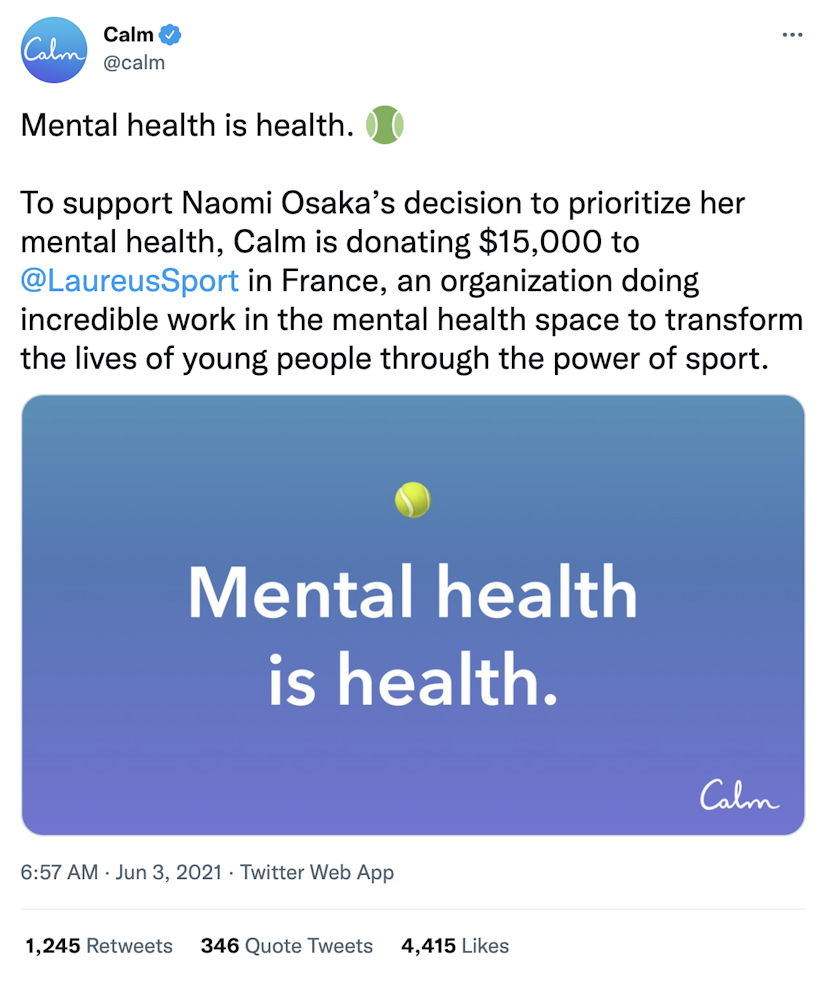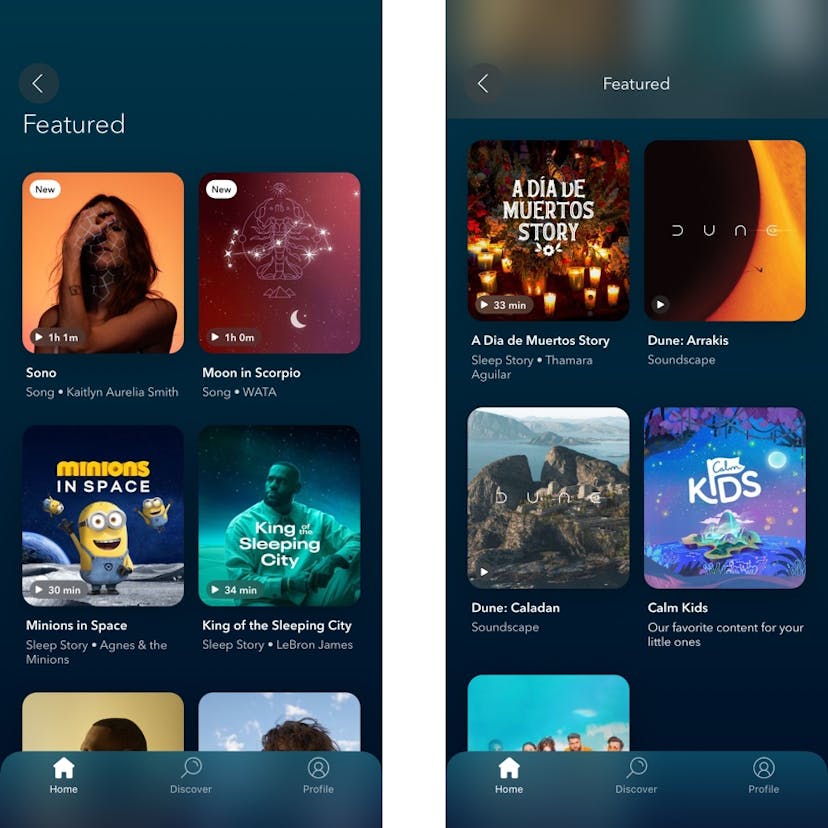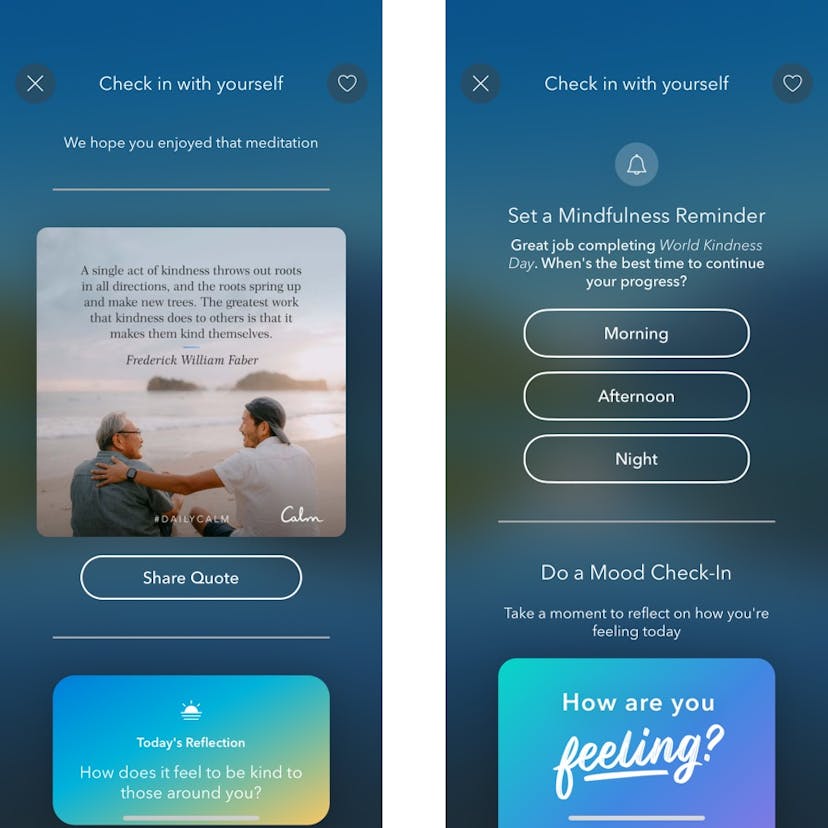marketing
Calm's Growth
Written on 14 November 2021
I have been using Calm (almost) daily for more than a month now. And I thought it might be fun to share my thoughts on their marketing and product.
Let me know whether you like such content?
Ingenious branding
I have been meditating on and off for several years, and the two apps that have always been top of mind for me are Calm and Headspace.
Thinking back now, I feel like I have not heard much about Headspace in quite a while. On the other hand, Calm has popped up several times.
- When Naomi Osaka was fined for choosing to prioritize her mental health and not attend a press conference, she suggested the fine be paid to a mental health organization. Calm donated $15,000 to Laureus to support her decision and offered to pay the fine for players opting out of 2021 Grand Slam media appearances for mental health reasons.
- Calm sponsored CNN’s coverage of the 2020 U.S. presidential election results—a pretty stressful time for many people!
- Calm partnered with celebrities such as Harry Styles, Lebron James, and Matthew McConaughey, which brought it much attention.

The interesting thing is I wasn't looking for a meditation app when all these happened. But these put Calm in a good light in my mind. So when I was looking for a meditation app, Calm came to mind immediately.
This applies to all the branding work we do. The purpose of each blog post, each tweet, each email is not to get someone to buy immediately but to think of your brand when they are looking for a solution.
(I also follow Patricia Mou on Twitter who (1) has a great newsletter, Wellness Wisdom, and (2) became a PM at Calm. I'm not sure how much that influenced my decision to use Calm but it helped keep Calm on my mind whenever I saw her tweet or newsletter.)
Growth partnerships
Calm has done many partnerships, and I think partnerships might be its most impactful channel. That is because partnerships help Calm grow in multiple ways:
- Reach and referrals: Its partnership with Harry Styles led to much press coverage and social shares. I believe a percentage of people who listened to the sessions by the celebrities would have shared it with their friends. I know I did. This would have helped them acquire new users or at least be on more people's minds.
- Reactivation and retention: By constantly adding special meditation or sleep sessions, Calm could bring inactive users back to the app and keep active users engaged. A new but typical meditation session might not be that attractive to an inactive user. But something unique like the Dune soundscapes is different. Dune fans loved them.

Calm is essentially a media app, like Netflix. The more unique and interesting content it has, the better it can acquire and retain users. And partnerships are a great way to scale its content creation.
Habit-building features
Besides the meditation sessions, Calm has several other features in the app to keep users engaged and to help users build new habits.
For a meditation app, I imagine one of their top metrics is Daily Active Users because the best users are likely those that use the app every day. And the features are built accordingly.
Daily Calm: Every day, there is a new 10-min meditation session to listen to. The sessions might be recycled but so far I can't tell. Also, it appears right in the middle of the app when I open it, which makes the experience frictionless. This is my favorite part of the app.

(I think Calm has the Netflix-problem, where people are not sure what to watch/listen to. Calm's home page is just like Netflix, with multiple different suggestions and categories. That said, Daily Calm likely solved this problem for most users, including me.)
Streaks: This gamification encourages users to meditate with the app daily. While I don't get any rewards, I still always try to beat my previous streak (currently at 35 days). I guess the reward is mindfulness. :)
11 different genres: Besides meditation sessions, Calm has sleep sessions, soundscapes, work music, etc. The different genres create more reasons to use the app. Even if I don't want to meditate, I could play the work music while I work.
Check-ins: Right after every meditation session, the app would ask me for my mood, which nudges me to engage with the app further. I can also use the app for gratitude check-ins, sleep check-ins, and daily calm reflection. While it sounds great, it also feels too much sometimes. I only record my mood.

Overall, I feel Calm struck a good balance with all its features.
First, I think it's amazing that they expanded beyond being just a meditation app—from something passive (listening) to something more active (jotting down my mood). Also, the things they added are largely complementary, which kept me more engaged. Finally, even though there are many features, the app doesn't show me everything all at once but only relevant features at suitable moments, which feels less overwhelming.